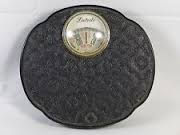Hey, Babe, Take a Walk on the Wild (Flower) Side: Flower Power at Bob’s Little Acre
- Robin Ford Wallace
- Apr 21, 2016
- 4 min read
Peace, man. We have always wanted to say that. It’s what the hippies used to say when they handed you a daisy or stuck a carnation into your rifle, depending on the social situation and whether or not you were about to shoot them. Where did that come from? We read the expression “Flower Power” in a seed catalog and it brought the 1960s tumbling back in all their splashy psychedelic Day-Glo glory. What a decade. Awakening! Rebirth! Mystic crystal revelations! Love, or at least riotous, rollicking, rampageous— Flowers. Flowers everywhere! Flowers in rifle barrels, flowers painted on VW buses and girls in swimsuits, flowers as stick-on bathtub appliqués, flowers in your hair when you went to San Francisco. And “flower children,” the long-haired youth of the era who cast aside the inhibitions of the repressive past, declaring their intention to embrace Nature and each other, to make love not war! But there one goes again, reeling down the petal-strewn garden path so delirious with spring fever that one crashes blindly into subjects clear of which a family-friendly feature such as this one should primly steer. Indeed, it is difficult to mention the ‘60s without treading on such shaky ground. Somewhere it is written that sex was invented in 1963, and we have never had the slightest difficulty believing it. Look at the movies and television of the stodgy, constipated, black-and-white 1950s. Look at the twin beds in Ricky and Lucy’s apartment. Look at the awful clothes and horrible white bobby socks of the period, at the grim armored rectitude of the underwear, and you must conclude, as we have, that in those days the human race was perpetuated strictly through parthenogenesis.
But then came the ‘60s, which were to the 20th Century what spring is to the year. Color! Noise! Bad behavior! Bra-burning and rock-and-roll music and love-ins, and in every corner wild, frenzied, uncontrolled— Well. Flowers. Hmm. If it is difficult to mention the ‘60s without departing from the spinsterish and Victorian propriety that has long been the earmark and the pride of this column, it is impossible to do so with flowers. It is, after all, with the darling buds of May that plants attract the birds and bees which have become the hallowed metaphor for subjects clear of which family-friendly features such as this must primly steer. And when a man presents a woman with a headily scented bouquet of the luridly-colored reproductive organs of a plant, that must be a metaphor for something, too. And a pithy one, we might add. They don’t call it “flower power” for nothing. Men, if you are looking for a competitive edge in the business of courtship, flowers are the tool that will get R done. Well, on second thoughts it is, perhaps, imprudent to make such promises on behalf of others, but in our own case a display of flowers in the grocery store has been known to induce paroxysms of EMT-summoning magnitude and cries of joy loud enough to do serious structural damage to the edifice. Those grocery-store flowers, roses and carnations and big blousy mums, are not subtle ones and this suits us well enough as we are not, horticulturally, the understated type ourself. As we have noted many times before, we like our flowers like country music singers like their hair, and happen to be the double impatiens queen of America. But at this time of year, a single white flower is enough to make us shriek. For it is our favorite time of year—wildflower time!


Wildflowers seize this moment, between bitter cold and full-blown warming, to live their whole winsome little lives, blooming and pollinating and producing seed for next year. As such, they strike us as such a glorious embodiment of carpe-diem springtime, of life itself, that sometimes we just have to lie on the ground and twitch.

Early wildflowers tend to be small and they tend to be simple. The first one you see is hepatica, a single row of white or, more rarely, blue petals on a leafless hairy stem. Then, as the season progresses, the flowers get more complex until you begin to see dwarf crested irises almost as extravagant as the garden variety. But it is all a matter of perspective. “Look at that fat, luscious bloodroot,” you might say, when what you mean is, “Look at that little white flower that isn’t quite as little as all the other little white flowers.” And after the starkness of winter, a single wild geranium might seem to loom over the forest like Godzilla. As for jack-in-the-pulpits, there is always some drama about spotting them, in that they are hard to see and anyway always look as if they are doing something they shouldn’t. If you do not know your wildflowers, you might enjoy buying a book or going on a guided walk, or both. With flowers as with people you might give flowers to, knowing their names is a minimum first step if you expect to get as far as first base. In any case, a guided walk is always an excellent way to remind us of our fundamental relationship with the universe, which is that most of what we know about it is institutionalized Male Answer Syndrome. On such walks, as in any pursuit of a horticultural stripe, you will hear a great many lies but may in any case emerge knowing names. Wildflowers are eloquent testimony that hope is always there, that life must eventually triumph over seemingly endless ordeals like winter, the 1950s or this column. And that, Gentle Reader, is what we call Flower Power.





Comments